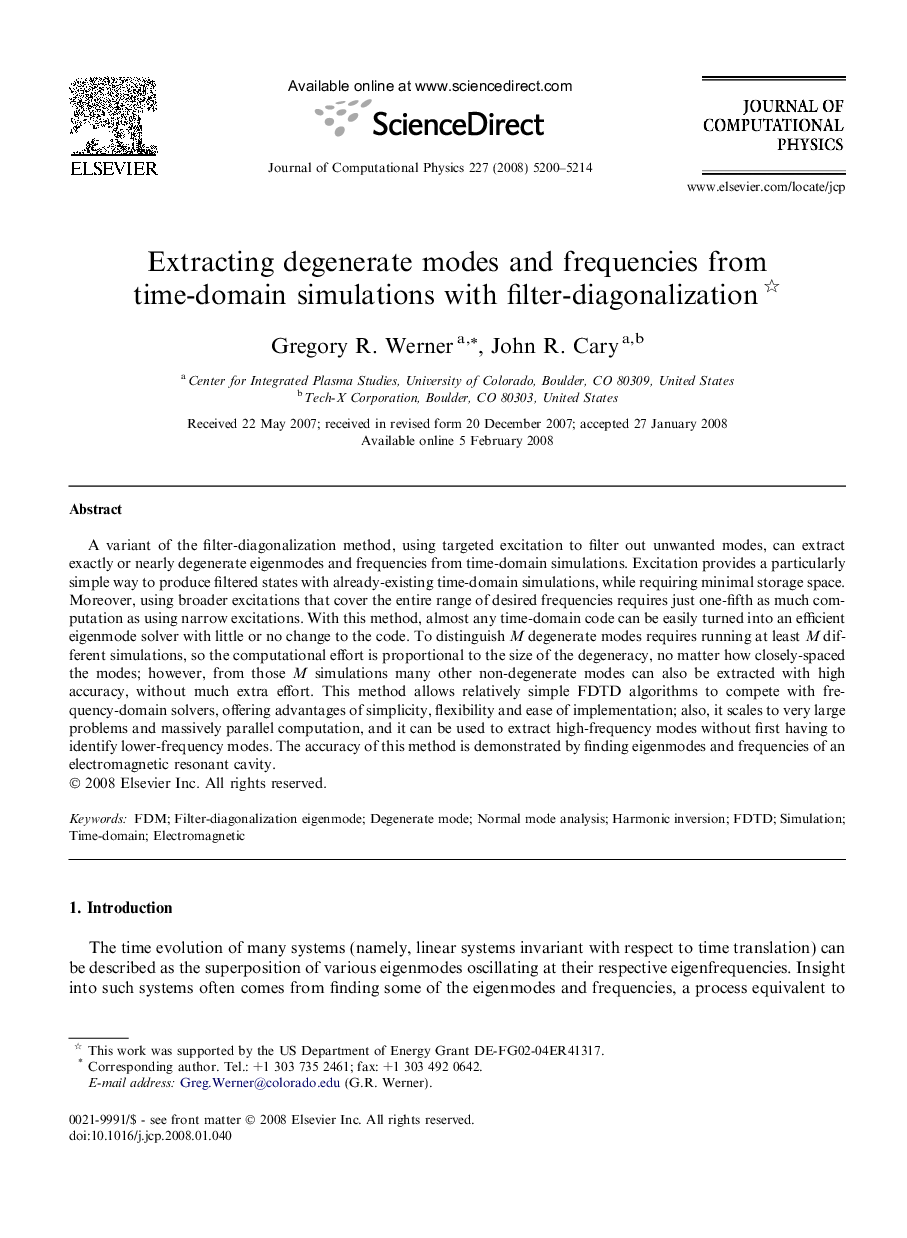| Article ID | Journal | Published Year | Pages | File Type |
|---|---|---|---|---|
| 522075 | Journal of Computational Physics | 2008 | 15 Pages |
A variant of the filter-diagonalization method, using targeted excitation to filter out unwanted modes, can extract exactly or nearly degenerate eigenmodes and frequencies from time-domain simulations. Excitation provides a particularly simple way to produce filtered states with already-existing time-domain simulations, while requiring minimal storage space. Moreover, using broader excitations that cover the entire range of desired frequencies requires just one-fifth as much computation as using narrow excitations. With this method, almost any time-domain code can be easily turned into an efficient eigenmode solver with little or no change to the code. To distinguish M degenerate modes requires running at least M different simulations, so the computational effort is proportional to the size of the degeneracy, no matter how closely-spaced the modes; however, from those M simulations many other non-degenerate modes can also be extracted with high accuracy, without much extra effort. This method allows relatively simple FDTD algorithms to compete with frequency-domain solvers, offering advantages of simplicity, flexibility and ease of implementation; also, it scales to very large problems and massively parallel computation, and it can be used to extract high-frequency modes without first having to identify lower-frequency modes. The accuracy of this method is demonstrated by finding eigenmodes and frequencies of an electromagnetic resonant cavity.
